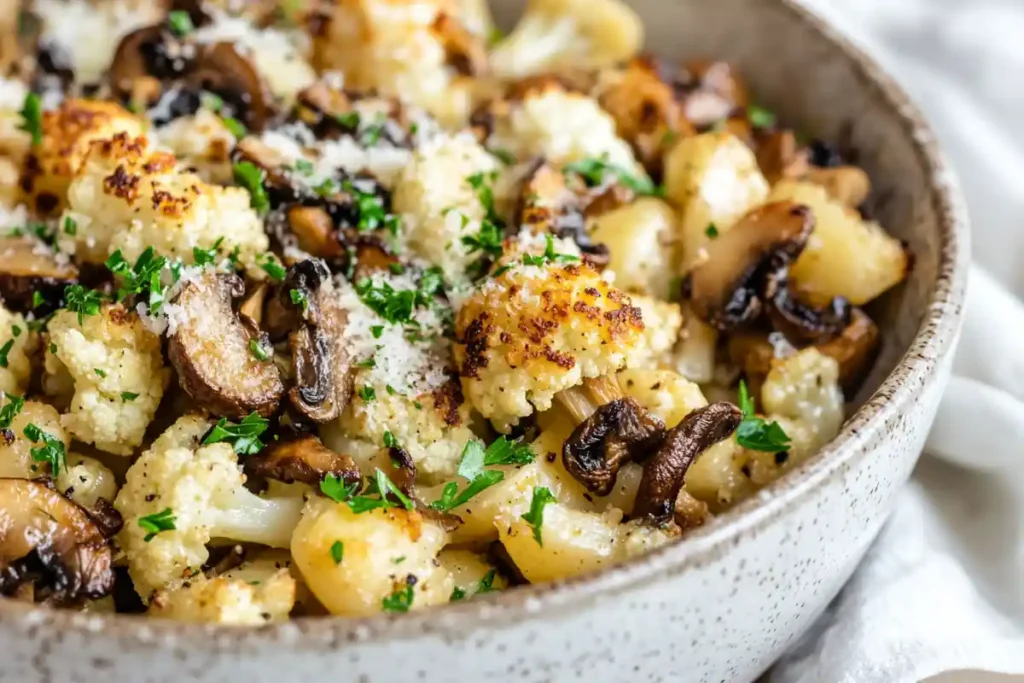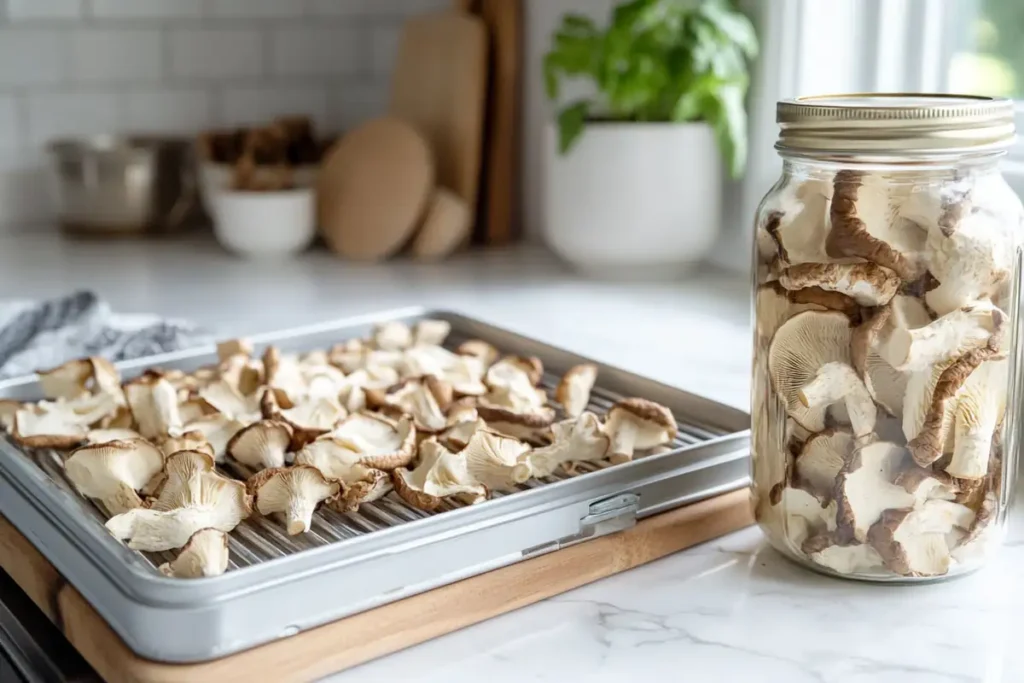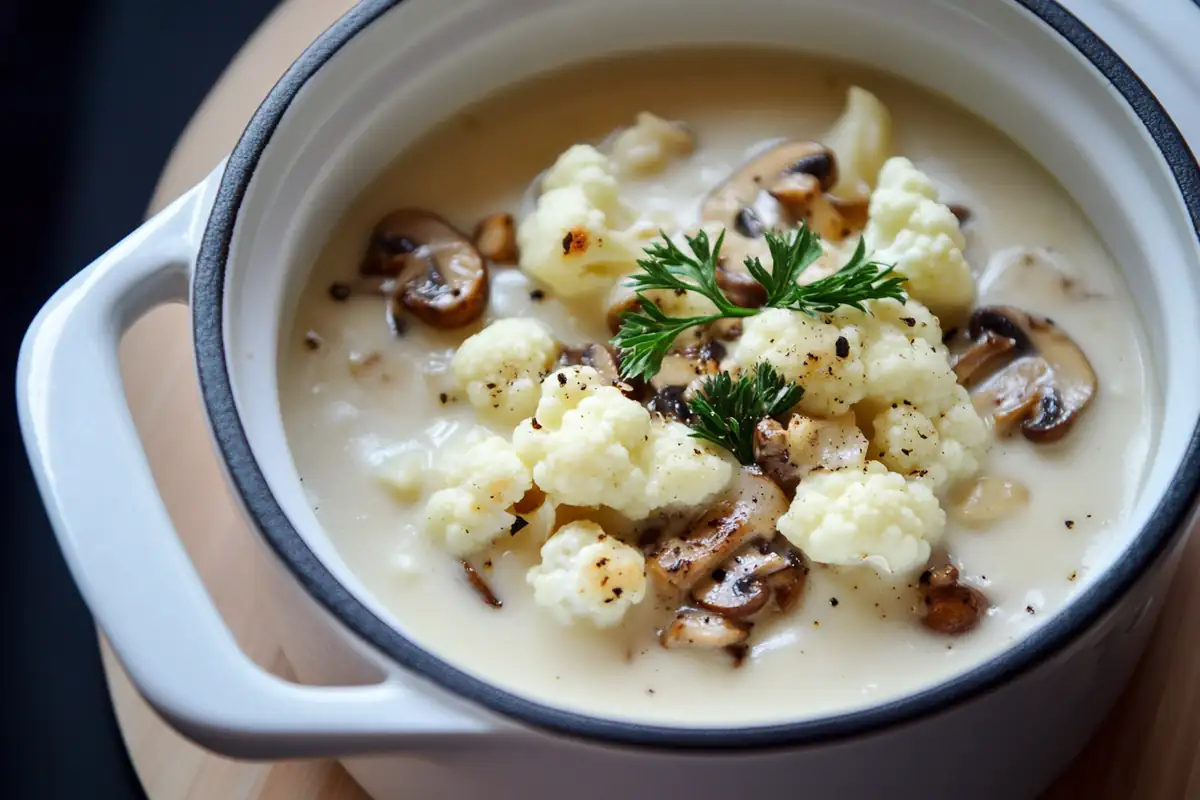The world of mushrooms is full of intriguing varieties, and the Cauliflower Mushroom stands out with its unique appearance and remarkable qualities. Resembling a head of cauliflower, this edible fungus is prized for both its flavor and potential health benefits. In this article, we’ll explore everything you need to know about Cauliflower Mushrooms, including their shelf life, proper storage methods, and culinary uses. Let’s start by understanding what makes this mushroom so special!
Introduction to Cauliflower Mushrooms
What are Cauliflower Mushrooms?
The Cauliflower Mushroom, scientifically known as Sparassis crispa, is a unique and highly sought-after edible fungi. Commonly referred to as wood cauliflower or noodle mushroom, it is celebrated for its intricate, ruffled structure that mirrors the appearance of a brain coral or sea anemone. These mushrooms can grow to an astonishing size, with some specimens weighing up to 50 pounds!
Native to temperate regions, these fungi thrive at the bases of trees, particularly conifers like pines and Douglas firs. Interestingly, the Cauliflower Mushroom is both parasitic and saprobic, feeding off live hosts or decomposing matter, which adds to its ecological significance.
Historical Background and Cultural Significance
For centuries, the Cauliflower Mushroom has played a role in traditional medicine and cuisine across Asia, particularly in China, Japan, and Korea. In Chinese medicine, it’s valued for its potential health benefits, including immune-boosting properties and its use in treating inflammation. Despite its historical roots, the mushroom is only recently gaining attention in Western culinary circles for its versatile flavor and texture.
This introduction lays the groundwork for exploring the Cauliflower Mushroom’s taxonomy, habitat, and uses in greater depth. From here, we’ll uncover the scientific and ecological intricacies of this remarkable fungus in the next part.
Scientific Classification and Morphology
Taxonomy: Scientific Name and Synonyms
The scientific name for the Cauliflower Mushroom is Sparassis crispa. The term “crispa” reflects its distinctive, ruffled structure, resembling a head of cauliflower or bundles of noodles. Often referred to as wood cauliflower or noodle mushroom, this fungi has several close relatives, including species like Sparassis radicata and Sparassis herbstii. While these species share similarities, each has subtle differences in growth patterns and habitats.
Understanding these distinctions can help you correctly identify the Cauliflower Mushroom while foraging. Curious about culinary uses for wild mushrooms? Explore recipes at Zinas Recipes for inspiration!
Physical Characteristics: Resemblance to Cauliflower
At first glance, the Cauliflower Mushroom appears more like an underwater coral or a brain coral than a forest fungus. Young specimens are whitish-yellow, transitioning to a creamy yellow with age. Its convoluted, wavy fronds develop a darker hue over time. These structures can spread into large, tangled clusters, often weighing several pounds.
Its unusual structure isn’t just for show—it provides a high surface area, which aids spore distribution. This complex design makes it both fascinating and practical in its natural ecosystem.
Comparison with Other Mushroom Species
The Cauliflower Mushroom can be confused with similar fungi, such as the Lion’s Mane or other coral-like mushrooms. However, its ruffled, noodle-like appearance and creamy hue distinguish it from others. Unlike mushrooms with a traditional cap and stem, the Cauliflower Mushroom consists entirely of tightly packed fronds.
Identifying it accurately is critical, as mistaking it for inedible or toxic lookalikes could lead to unpleasant consequences. Keep in mind that many edible wild mushrooms, like chanterelles or morels, can complement your culinary adventures similarly.
Habitat and Distribution
Geographical Regions Where They Grow
The Cauliflower Mushroom is widespread across temperate regions, favoring old-growth forests in North America, Europe, and Asia. In the Pacific Northwest of the United States, they flourish under conifers like Douglas firs and spruces. Meanwhile, on the East Coast and in parts of Europe, they’re more likely found at the bases of hardwoods such as oak.
These mushrooms thrive in undisturbed, mature forests where they parasitize trees or feed on decaying organic matter.
Seasonality: When to Find Them
What is the name of the Cauliflower Mushroom‘s peak season? It’s a common question among foragers. These fungi typically fruit from late summer to early winter, peaking between July and November. Seasonal rains play a vital role in their development, making damp autumn months ideal for discovery.
Preferred Growing Conditions and Trees
The Cauliflower Mushroom relies on specific environmental conditions. It grows symbiotically with trees, often parasitizing the roots of living conifers or decomposing stumps. Moist, nutrient-rich soils provide the perfect medium for their growth.
Understanding where and when to find these fungi can enhance your foraging success. If you’re intrigued by wild-foraged ingredients, check out this guide to using mushrooms in recipes.
These sections provide a clear view of the scientific and ecological aspects of the Cauliflower Mushroom, while maintaining readability and incorporating useful tips for enthusiasts and foragers.
Culinary Uses of Cauliflower Mushrooms

Flavor Profile and Nutritional Value
The Cauliflower Mushroom boasts a mild, nutty flavor with a hint of earthiness, making it an excellent addition to a variety of dishes. Its slightly crunchy texture holds up well in soups, stir-fries, and baked dishes, giving meals an extra layer of complexity. Packed with fiber, vitamins, and beta-glucans, these mushrooms not only taste great but also offer impressive health benefits.
Rich in antioxidants and low in calories, they are a healthy alternative for enriching your diet. Curious about how other natural ingredients can enhance your meals? Consider exploring nutritional insights on natural foods.
Cooking Techniques: Recipes and Tips
Cooking with Cauliflower Mushrooms is both easy and rewarding. Their unique structure allows them to absorb flavors beautifully. Before cooking, rinse thoroughly to remove dirt trapped in the folds, then pat dry. Slice them into manageable pieces and sauté with garlic, butter, or olive oil for a quick, savory side dish.
For a hearty meal, add them to creamy pasta, risottos, or even vegetarian stews. Their noodle-like fronds make them a delightful substitute for traditional pasta in low-carb recipes. For additional inspiration, check out our recipe guide on creative vegetarian dishes.
Storage and Preservation
To keep Cauliflower Mushrooms fresh, store them in a paper bag in the refrigerator. They can last up to a week but are best consumed fresh. For longer storage, consider freezing or dehydrating them. Dried mushrooms can be rehydrated later for soups and sauces without losing their rich flavor.
Medicinal Benefits and Modern Applications
Health Benefits and Active Compounds
What is the name of the Cauliflower Mushroom that’s packed with medicinal properties? Sparassis crispa contains high levels of beta-glucans, which are linked to immune system support, cancer prevention, and anti-inflammatory benefits. Studies suggest these compounds may help lower blood sugar levels and reduce cholesterol.
Additionally, its antiviral and antitumor properties make it a promising candidate in modern medical research. Consuming Cauliflower Mushrooms regularly can be a natural way to boost overall health.
Current Research and Therapeutic Uses
Recent studies are exploring the therapeutic potential of Cauliflower Mushrooms in preventing chronic illnesses. Researchers are particularly interested in its role in managing diabetes, heart diseases, and certain types of cancer. With more evidence emerging, it’s gaining recognition as a functional food.
Want to learn more about using food as medicine? Browse our guide on healthy eating and its impact on wellness.
Traditional Medicine Practices
In traditional Chinese medicine, the Cauliflower Mushroom has been used for centuries to strengthen the body’s defenses and promote vitality. Its use has expanded to modern Japanese and Korean diets, where it’s revered as a superfood.
This mushroom’s medicinal legacy shows its value beyond just culinary applications, highlighting its importance in ancient and contemporary health practices. To explore more natural remedies, check out our article on traditional medicinal recipes.
These sections highlight the culinary versatility and medicinal value of the Cauliflower Mushroom, encouraging readers to incorporate it into their cooking and wellness routines. For more creative recipes and tips, visit Zinas Recipes.
Foraging and Ethical Harvesting
How to Identify and Collect Safely
What is the name of the Cauliflower Mushroom? Known as Sparassis crispa, this intriguing fungus stands out for its unique, ruffled appearance. Spotting it in the wild can be exciting, but safety should always come first. Familiarize yourself with its distinctive traits: creamy yellow, wavy fronds that resemble a head of cauliflower.
When foraging, use a reliable field guide to avoid confusing it with similar-looking but potentially toxic mushrooms. Always inspect for any discoloration or signs of decay, as these can indicate spoilage.
Impact on Ecosystems and Sustainability
Foraging isn’t just about finding mushrooms; it’s about respecting nature. The Cauliflower Mushroom plays a vital role in forest ecosystems, breaking down decaying matter and enriching the soil. When harvesting, practice sustainability by taking only what you need and leaving the rest for wildlife and future growth.
To minimize environmental impact, use a clean knife to cut the mushroom at its base, avoiding damage to the underlying mycelium. This ensures the fungi can regenerate, maintaining its population for years to come.
Spore Prints and Cultivation at Home
Interested in growing your own Cauliflower Mushrooms? Start by making a spore print from a freshly harvested mushroom. Lay it on a sheet of paper, cover it with a bowl, and let it release spores overnight. These can be used to inoculate suitable growing media, allowing you to cultivate this delicious fungus at home.
Cooking Tips and Techniques
Preparing Cauliflower Mushrooms for Cooking
What is the name of the Cauliflower Mushroom that’s gaining popularity in kitchens? It’s Sparassis crispa, and it’s a culinary treasure. Before you start cooking, ensure your mushrooms are clean and free of dirt or debris. Due to their intricate, ruffled structure, soil can easily become trapped. Rinse them gently under cold water and pat them dry with a clean towel.
When cleaning, avoid soaking the mushrooms for long periods, as they can absorb water and lose their texture. For best results, slice them into smaller pieces that cook evenly and retain their distinct crunch.
Best Cooking Methods for Flavorful Dishes
The Cauliflower Mushroom is incredibly versatile, lending itself well to various cooking methods. Sautéing in butter or olive oil with a pinch of garlic and herbs enhances its earthy, nutty flavor. It also pairs wonderfully with creamy sauces in pasta and risotto.
For a unique twist, try using it as a meat substitute in vegetarian dishes. Its chewy texture mimics that of chicken or seafood, making it a star ingredient in stir-fries, soups, or tempura.
Pro tip: If you’re making a recipe with extra liquid, like soups or stews, account for the moisture the mushrooms may release during cooking. This ensures your dish stays perfectly balanced.
Storage and Preservation Tips

Short-Term Storage for Fresh Mushrooms
To keep Cauliflower Mushrooms fresh for immediate use, store them in a paper bag in the refrigerator. Avoid plastic bags, as they trap moisture, which can lead to spoilage. Properly stored, these mushrooms can last up to a week, retaining their flavor and texture.
Long-Term Preservation Techniques
If you’ve gathered more than you can use right away, preserving them ensures you enjoy their benefits for months to come. Drying is one of the most effective methods. Use a dehydrator or an oven at a low temperature to remove moisture, then store the dried mushrooms in an airtight container.
Freezing is another option. Clean and blanch the mushrooms before freezing to preserve their texture and flavor. When ready to use, thaw them slowly and incorporate them into your recipes.
For more tips on using fresh and preserved ingredients, explore our guide on innovative cooking solutions.

